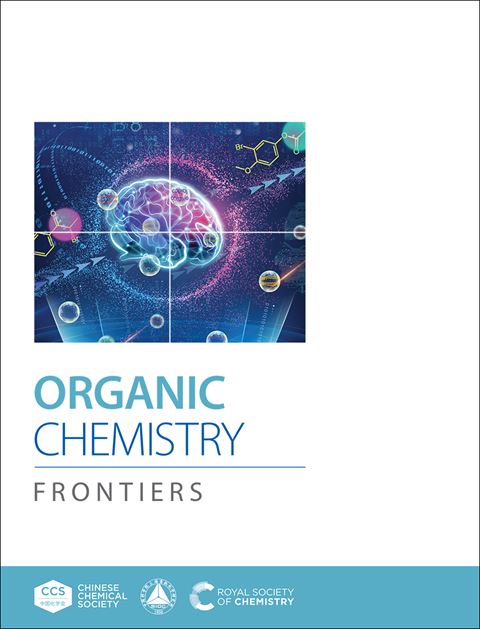磺胺合成:通过光催化偶联解锁芳基三氟酸酯的新途径
IF 4.7
1区 化学
Q1 CHEMISTRY, ORGANIC
引用次数: 0
摘要
芳基磺胺是制药和材料科学中必不可少的支架,由于有毒试剂和过渡金属依赖的协议,面临着合成可持续性的挑战。新兴的芳基自由基、so2代物和胺的三组分偶联提供了一种模块化的选择;然而,从丰富的酚类前体生成芳基自由基仍未得到充分的研究。在此,我们报告了一种新的,无过渡金属的光催化策略,用于模块化合成结构多样的芳基磺胺。该方法利用NaI作为双功能催化剂和软电子给体,在温和条件下(室温、紫外光)直接激活丰富的生物质来源的芳基三氟化酯,从而克服了芳基自由基生成的长期限制。nai介导的系统实现了精确的、面向轨道的电子转移,克服了传统SET机制的固有限制,实现了以前方法无法实现的可控芳基自由基生成。这种新颖的激活策略有助于与SO₂替代物(K₂S₂O₅)和非常广泛的胺(包括脂肪族,芳香族,杂环和复杂的药物相关胺)进行有效的三组分级联偶联,以良好的收率提供磺胺产品。本文章由计算机程序翻译,如有差异,请以英文原文为准。
Sulfonamide Synthesis: Unlocking New Pathways with Aryl Triflates via Photocatalytic Coupling
Arylsulfonamides, essential scaffolds in pharmaceuticals and materials science, face synthetic sustainability challenges due to toxic reagents and transition-metal-dependent protocols. The emerging three-component coupling of aryl radicals, SO₂ surrogates, and amines offers a modular alternative; however, aryl radical generation from abundant phenolic precursors remains underexplored. Herein, we report a novel, transition-metal-free photocatalytic strategy for the modular synthesis of structurally diverse arylsulfonamides. This method overcomes longstanding limitations in aryl radical generation by utilizing NaI as a dual-functional catalyst and soft electron donor to directly activate abundant, biomass-derived aryl triflates under mild conditions (room temperature, UV light). The NaI-mediated system enables precise, orbital-oriented electron transfer, overcoming the inherent constraints of traditional SET mechanisms and achieving controlled aryl radical generation where previous methods failed. This novel activation strategy facilitates an efficient three-component cascade coupling with SO₂ surrogates (K₂S₂O₅) and a remarkably broad scope of amines, including aliphatic, aromatic, heterocyclic, and complex pharmaceutically relevant amines, delivering sulfonamide products in good to excellent yields.
求助全文
通过发布文献求助,成功后即可免费获取论文全文。
去求助
来源期刊

Organic Chemistry Frontiers
CHEMISTRY, ORGANIC-
CiteScore
7.90
自引率
11.10%
发文量
686
审稿时长
1 months
期刊介绍:
Organic Chemistry Frontiers is an esteemed journal that publishes high-quality research across the field of organic chemistry. It places a significant emphasis on studies that contribute substantially to the field by introducing new or significantly improved protocols and methodologies. The journal covers a wide array of topics which include, but are not limited to, organic synthesis, the development of synthetic methodologies, catalysis, natural products, functional organic materials, supramolecular and macromolecular chemistry, as well as physical and computational organic chemistry.
 求助内容:
求助内容: 应助结果提醒方式:
应助结果提醒方式:


